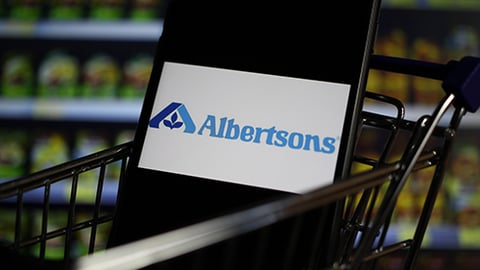Reimagining the Grocery Store With Data at the Center
The year 2020 was the most transformative year for grocery, as the pandemic caused a dramatic shift in the way consumers shopped. Most significant was the digital play, which captured three to four times the sales in just a few short months. Sixty-eight percent of new digital grocery customers now consider digital to be a permanent part of their shopping routine.
As innovation in the physical store accelerates, expectations of the in-store shopping experience are shifting to in-store personalization, loyalty offers, wayfinding and in-stock conditions, with digital as the key enabler. Looking ahead, every grocery company must become a digital company. Accelerating the pace and scale of digital technology adoption is critical to remaining competitive in this industry. To thrive, grocers have to put customer experiences at the center of their strategic focus, and technology will be critical in helping them get there.
The foundation of this success is built on data. The ability to leverage data enables real-time customer experiences and transformative business decisions. With this data foundation, grocers can:
Connect and personalize marketing to deliver timely cross-channel customer experiences. COVID-19 impacted customer behavior in ways that forced grocers to dramatically change the way they engage with customers across channels, and much of this shift is here to stay. In grocery, services like curbside pickup and same-day delivery exploded during the pandemic, and e-commerce penetration rose from 2% to 3% before the crisis to 8% to 10% during its peak.
This has led to new consumer expectations: Shoppers want brands to engage with them in real time with personalized experiences both online and in-store. With no shortage of competition, grocers need to leverage their data to meet this new demand. With responsive cross-channel communication, grocers can use strategies like in-app messages so they can be alerted to the most accurate and up-to-date information like pickup and delivery times, inventory levels, and alerts regarding restocked items and order adjustments.
Optimize the business, including assortment planning, merchandising and sustainable sourcing. Grocers need to have a finger on the pulse regarding what products customers want in their local stores, and accurately estimate quantities and timing. Having too little or too much is a constant worry without a data-driven understanding of needs. Assortment and merchandising at the store level enable retailers to connect more with their customers.
These are essential steps to improving margins to offset rising costs in other areas and to improve the efficiency of manufacturers supplying these goods. Supply chain transparency ensures dependable and sustainable product sourcing to satisfy the customer.
Streamline supply chain through artificial intelligence (AI)/machine learning to optimize inventory, allocation, ordering and replenishment. AI and machine learning are quickly becoming mainstream within the grocery industry. The applications of AI/machine learning solutions have the potential to completely revolutionize the way grocers stock their shelves. Data can help forecast demand so grocers can ensure that the items customers want are there when they are most likely to need them based on models and predictions. This level of optimization not only provides customers with great service, it also helps grocery retailers be more efficient while reducing food waste and costs.
Empower associates with information at their fingertips to perform their roles and assist shoppers. In-store experiences are evolving, and it’s even more critical for physical retail to be an inviting and pleasurable experience to maintain traffic and preserve competitive advantage. To achieve this, store associates need information at their fingertips, repetitive tasks will be automated, task assignments will be more dynamic, and digital information will be readily accessible to customers for self-service. Where the status quo is no longer an option, grocers need to rethink their business and value chain to survive and thrive in the new normal. In an ever-changing landscape, developing an agile and innovative culture will be table stakes.
We saw firsthand the swift shift in new shopping habits in response to the pandemic. Those habits are now redefining consumer behavior, and we can expect that these trends are here to stay. For grocers, using data-driven strategy to meet their customers in the way they want to shop, pay and receive their groceries now and in the future is key. There are already clear winners of the pandemic, with digitally forward grocers accelerating their position in the market.







